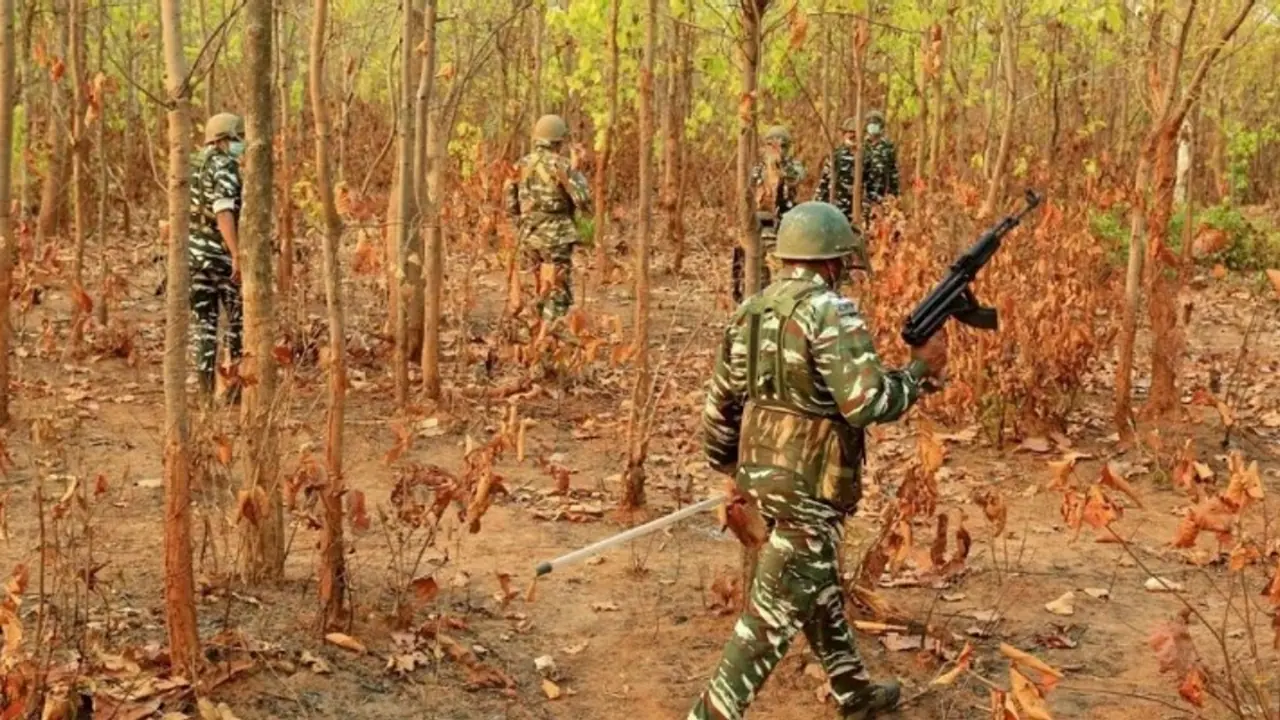In a significant operation against Naxal insurgency, police sources confirmed the killing of nine Naxals during an intense encounter in the forested area at the Dantewada-Bijapur border in Chhattisgarh on Tuesday.
In a significant operation against Naxal insurgency, police sources confirmed the killing of nine Naxals during an intense encounter in the forested area at the Dantewada-Bijapur border in Chhattisgarh on Tuesday. This operation marks a critical step in the government's ongoing efforts to eliminate the menace of Naxalism, which has plagued several regions in India for decades.

The encounter, which began at 10:30 am, was the result of a joint search operation by police forces acting on intelligence about the presence of Maoists from the West Bastar Division in the area. Dantewada Superintendent of Police Gaurav Rai reported that a substantial cache of automatic weapons, including SLR rifles, .303 rifles, and .315 bore rifles, was recovered from the slain Naxals. All security personnel involved in the operation emerged unscathed, and search operations are continuing in the area. A detailed report is expected to be released upon the completion of the operation.
This latest encounter is part of a broader strategy by the Indian government to eradicate Naxalism, particularly in the Red Corridor—a region spanning nine states where left-wing extremism (LWE) has historically held sway. The government's resolve to tackle Naxalism has been underscored by a series of successful operations in recent months, including a similar encounter last week in the dense forests of Abujhmad, Narayanpur.
In that operation, three women Naxalites, identified as members of the North Bastar Division Committee and the People's Liberation Guerrilla Army (PLGA) Company number 5, were killed. The operation led to the recovery of more weapons and Naxal materials, further weakening the insurgent groups' capabilities.
The growing success of these operations is closely linked to the government's comprehensive approach to combating Naxalism. On August 24, Union Home Minister Amit Shah reaffirmed the government's commitment to freeing the country from the grip of Naxalism by March 2026. Shah made this declaration during an inter-state coordination meeting in Chhattisgarh, which saw the participation of Chhattisgarh Chief Minister Vishnu Deo Sai, Chief Secretaries, and Director Generals of Police from Chhattisgarh and neighboring states.
During the meeting, Shah reviewed the various measures taken against Naxal insurgency, as well as the progress of infrastructure projects in the LWE-affected regions. These infrastructure initiatives, aimed at improving connectivity and economic opportunities in remote areas, are seen as crucial to cutting off the socio-economic roots of Naxalism.
The government's strategy involves a combination of security operations and developmental efforts to address both the immediate and underlying causes of Naxalism. The security forces, including the District Reserve Guard (DRG), Special Task Force (STF), and the Border Security Force (BSF), have been working in close coordination to carry out precision-based operations against Naxal strongholds. These operations are supported by enhanced intelligence gathering, advanced technology, and the deployment of specialized units trained to handle guerilla warfare tactics employed by Naxal groups.
In tandem with security measures, the government is also focusing on accelerating infrastructure development in the Red Corridor. Projects aimed at improving roads, communication networks, and public services are being prioritized to bring these regions into the mainstream and reduce the appeal of Naxal ideology among the local population. The emphasis on infrastructure is also designed to enable quicker and more effective deployment of security forces in response to Naxal threats.
In tandem with security measures, the government is also focusing on accelerating infrastructure development in the Red Corridor. Projects aimed at improving roads, communication networks, and public services are being prioritized to bring these regions into the mainstream and reduce the appeal of Naxal ideology among the local population. The emphasis on infrastructure is also designed to enable quicker and more effective deployment of security forces in response to Naxal threats.
The series of encounters and the ongoing efforts to improve infrastructure highlight the government's holistic approach to resolving the issue. With a clear deadline set for 2026, the focus now shifts to sustaining and building on the momentum gained in recent operations, ensuring that Naxalism is permanently eradicated from the Indian landscape.
